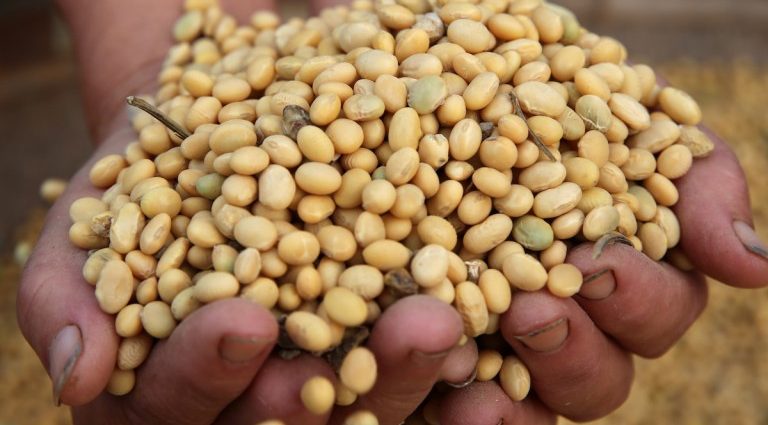Over the past four decades, China has made significant achievements in maintaining food security through institutional reforms, technological progress and increased investment in public agricultural infrastructure.
Between 1978 and 2022, the total quantity of agricultural output grew at the rate of 4.5% per year — more than four times the population growth over the same period. In 2022, China’s total grain output reached a historical high of 686.53 million tonnes, substantially boosting its domestic food supply.
But China still faces considerable challenges in ensuring food security, with demand for high-value and high-protein products increasing along with per capita income. Constraints in land and water supply, issues with small farms, an aging rural population and extreme weather events caused by climate change can disrupt food production and distribution.
Recent studies show that extreme rainfall has led to an 8% decrease in China’s rice crop yields over the past two decades, exacerbating food insecurity concerns caused by frequent pest shocks, severe droughts and rising carbon emissions.
To tackle the challenges arising from climate change, the Chinese government has implemented three sets of measures. These measures involve improving irrigation systems and other agricultural and transportation infrastructure. This includes initiatives such as channeling water from the south to the north and constructing high-standard farmland and water conservancy facilities.
The government has also invested in agricultural research and technological innovation, promoting the adoption of climate-resilient crop varieties. Additionally, efforts have been made to strengthen the insurance system for agricultural production.
China has instituted public policies to actively foster the transition towards a sustainable agricultural production system. In 2015, China introduced the strategy of “hiding grain in the ground and hiding grain in technology,” emphasizing the importance of capacity building rather than solely focusing on output targets in grain production.
Since implementing the “Action Plan for Zero-Growth in Fertilizer Use” in 2015, the use of fertilizers and chemicals in agriculture has reduced by one-third.
As part of its 14th Five Year Plan, China has launched a new initiative aimed at increasing domestic grain production by an additional 50 million tonnes. Several new policies have been implemented in conjunction with this campaign to enhance farmers’ climate resilience.
These measures include strengthening disaster prevention and mitigation capabilities by adopting ICT technologies, better utilizing germplasm resources, constructing seed banks, implementing full-cost insurance for grain producers in food-deficient counties and preventing the use of arable land for non-agriculture purposes.
China is also considering diversifying its food sources through increasing imports of feed grains and oil crops. In 2022, China imported 91 million tonnes of soybean and 20.6 million tonnes of maize, which accounted for about 14% of its total grain consumption.

While this campaign helps mitigate potential food shortages caused by climate-related disruptions in the short run by bolstering domestic grain self-sufficiency, the long-term effects of these policies on mitigating climate change remain uncertain.
China continues to confront significant pressure in maintaining stable grain production while simultaneously promoting green development and the sustainable utilization of resources.
While efforts have already contributed to conserving resources, reducing emissions and increasing agricultural productivity, fertilizers and chemicals are still being used in agriculture at a rate far above the global average.
Looking forward, China is on the right track for setting up its policy scheme for its agriculture sector to cope with increasing environmental risks.
In the next decade, new agricultural practices, such as precision agriculture and vertical farming, are expected to play a more prominent role in facilitating the transformation of food production in China towards a sustainable path.
Yet the future of agricultural production and food security depends not only on government policies and technological advancements but also on active private sector participation in adapting to climate change. International cooperation also plays a crucial role in addressing climate change and its impacts on the global food system.
China is actively working to improve farmers’ capacity to adapt by further reforming the agricultural production system. Collaborative efforts are also underway with other countries and regions in research, knowledge sharing and sustainable practices, including enforcing its carbon emission reduction scheme to secure a stable food supply for China’s population.
However, the ongoing development and implementation of strategies related to food security and climate change still have a long way to go.
Yu Sheng is Professor at the School of Advanced Agricultural Sciences and Deputy Director at New Rural Development Institute, Peking University.
Siying Jia is research associate at the School of Advanced Agricultural Sciences, Peking University.
This article was originally published by East Asia Forum and is republished under a Creative Commons license.

